Hello
I’ve mentioned before that I have a black molly who has been flashing on the substrate a lot. This has been going on for a couple of months and I have treated for ich and also flukes and worms, though am now at the point where I’m very conscious of adding any more incorrect meds.
The water conditions are very good and tank maintenance good (ammonia nitrite zero and nitrate kept around 5-10, twice weekly water changes) but I’ve only been in the hobby several months and think by not quarantining new arrivals gradually added more and more problems. I lost 4 guppies in recent weeks though no obvious outward symptoms. (Different to this molly who has flashed for weeks). He is eating and still swimming but spending more and more time sat on the bottom and flashes lots too still. Today he has spent nearly the whole day sat on the bottom near the air stones. I feel like he looks awkward swimming and am wondering if this is clamped fins? I don’t know if he is just looks different swimming to the females as they are more rounded. However also today a few whiteish marks have appeared on him. They don’t seem like ich spots. There is a slight mark near the front of him above his eye and a larger mark at the back of his fin, slightly stringy or cottony I suppose though I’m not sure it’s the cotton wool disease I’ve read about. I can’t get a decent picture as he wriggles and my camera loses focus. I got a video of him swimming but it won’t upload. (Edit think I have added it now in a reply comment) I’ll keep trying to get a better photo. I’m going to put him in a salt bath while I do a water change (I tried low dose salt in the tank several weeks ago but have cories so removed it after a fortnight). Please help
I’ve mentioned before that I have a black molly who has been flashing on the substrate a lot. This has been going on for a couple of months and I have treated for ich and also flukes and worms, though am now at the point where I’m very conscious of adding any more incorrect meds.
The water conditions are very good and tank maintenance good (ammonia nitrite zero and nitrate kept around 5-10, twice weekly water changes) but I’ve only been in the hobby several months and think by not quarantining new arrivals gradually added more and more problems. I lost 4 guppies in recent weeks though no obvious outward symptoms. (Different to this molly who has flashed for weeks). He is eating and still swimming but spending more and more time sat on the bottom and flashes lots too still. Today he has spent nearly the whole day sat on the bottom near the air stones. I feel like he looks awkward swimming and am wondering if this is clamped fins? I don’t know if he is just looks different swimming to the females as they are more rounded. However also today a few whiteish marks have appeared on him. They don’t seem like ich spots. There is a slight mark near the front of him above his eye and a larger mark at the back of his fin, slightly stringy or cottony I suppose though I’m not sure it’s the cotton wool disease I’ve read about. I can’t get a decent picture as he wriggles and my camera loses focus. I got a video of him swimming but it won’t upload. (Edit think I have added it now in a reply comment) I’ll keep trying to get a better photo. I’m going to put him in a salt bath while I do a water change (I tried low dose salt in the tank several weeks ago but have cories so removed it after a fortnight). Please help
Attachments
-
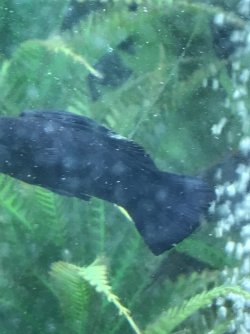 05F84E62-F02B-4728-813F-E0F7108A8CBB.jpeg201.4 KB · Views: 19
05F84E62-F02B-4728-813F-E0F7108A8CBB.jpeg201.4 KB · Views: 19 -
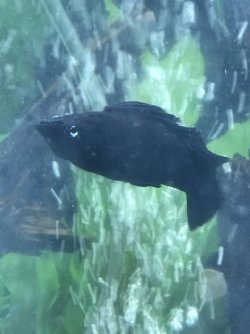 57A90CF8-5B9F-4921-B1B4-E21AD42EEA9B.jpeg165.4 KB · Views: 19
57A90CF8-5B9F-4921-B1B4-E21AD42EEA9B.jpeg165.4 KB · Views: 19 -
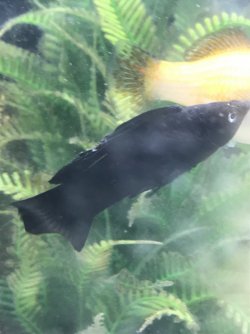 43E2A59F-01E2-4F12-888E-A2C65B0813B2.jpeg198.4 KB · Views: 20
43E2A59F-01E2-4F12-888E-A2C65B0813B2.jpeg198.4 KB · Views: 20 -
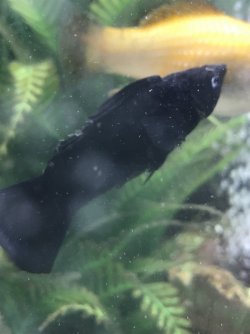 99F94340-0F9A-41CE-AC81-CD778F317C11.jpeg169.3 KB · Views: 20
99F94340-0F9A-41CE-AC81-CD778F317C11.jpeg169.3 KB · Views: 20 -
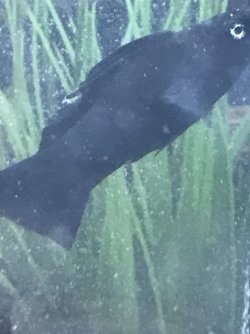 3A98DD9C-1F8D-406C-8063-3FA755C65A17.jpeg156.3 KB · Views: 18
3A98DD9C-1F8D-406C-8063-3FA755C65A17.jpeg156.3 KB · Views: 18

